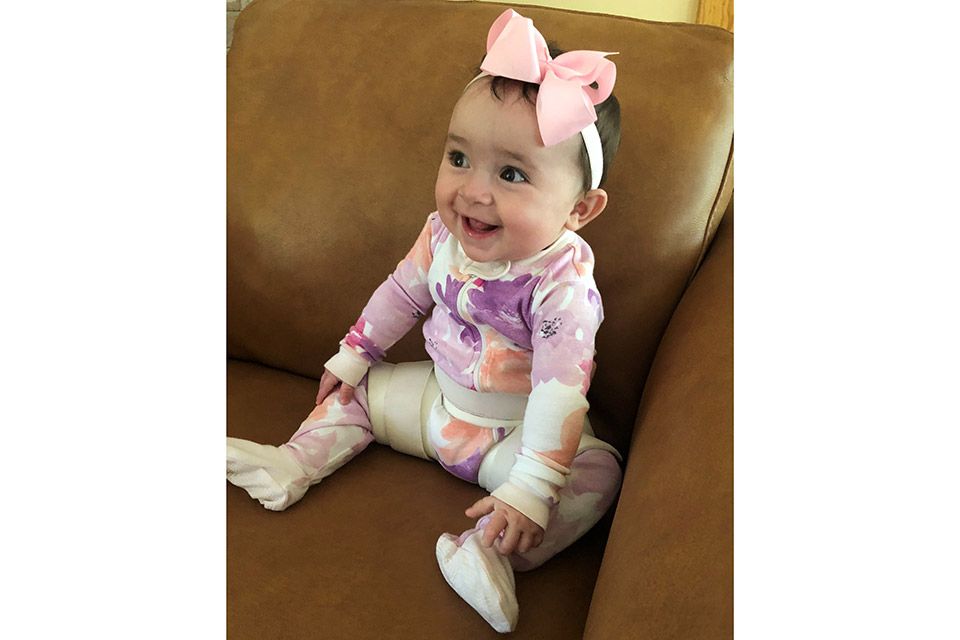Hip Dysplasia Can't Stop Gwenyth's Snuggles
When an ultrasound revealed that Lauren’s 3-month-old daughter, Gwenyth, had bilateral hip dysplasia and would need to begin 24-hour bracing treatment right away, Lauren sobbed. “I was so emotional because I feared she would be in pain, and thought that I would no longer be able to hold her and have her snuggle up against me,” she said.
Bilateral hip dysplasia occurs when the balls of each thighbone do not fit properly into the sockets of the pelvis or hip joints.
Springfield Shriners Hospital nurse practitioner Amy L. Arguin, MSN, CPNP, assured Lauren that the brace wouldn’t cause Gwenyth any discomfort. Amy explained to Lauren that hip dysplasia isn’t painful and wouldn’t cause any delay in her daughter’s development, either. According to Amy, the goal for treatment is to create a normal hip socket and prevent joint disease and arthritis at an early age. A brace is utilized to keep the legs in a frog-leg position, which is the best way for hip sockets to develop.
Two months later, X-rays showed that wearing the brace 24 hours each day for eight weeks improved Gwenyth’s condition enough that, moving forward, she would only need to wear the brace at night or during nap time.
Lauren is very grateful for the progress that Gwenyth has made. “Gwenyth is now sitting, crawling and much stronger than she was before. And, we still have our precious snuggle time.”
Gwenyth will continue to have routine check-ups with Amy for at least the next few months to monitor her progress with wearing the brace.
Lauren describes her experience at the Springfield Shriners Hospital as unbelievable. “Shriners Hospital took a scary situation and turned it into a great experience. Every time we go there, they make us feel like my child and I are the most important people in the world, and that’s a really special thing.”

Keep In Touch
Join our mailing list to stay up to date on everything that's happening at Shriners Children's.
